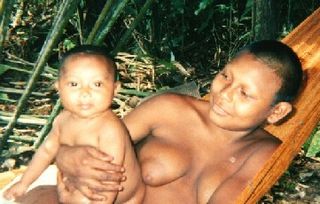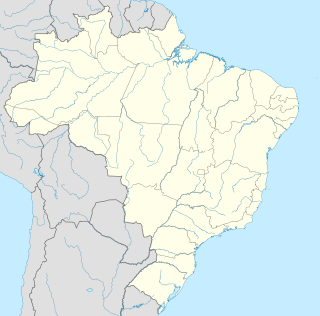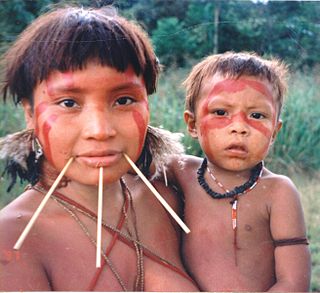 W
WUncontacted peoples are communities or groups of indigenous peoples living without sustained contact to neighbouring communities and the world community, and includes "indigenous peoples in voluntary isolation". Legal protections make estimating the total number of uncontacted tribes challenging, but estimates from the Inter-American Commission on Human Rights in the UN and the non-profit group Survival International point to between 100 and 200 tribes numbering up to 10,000 individuals. A majority of tribes live in South America, particularly Brazil, where the Brazilian government and National Geographic estimate between 77 and 84 tribes reside.
 W
WThe Ayoreo are an indigenous people of the Gran Chaco. They live in an area surrounded by the Paraguay, Pilcomayo, Parapetí, and Grande Rivers, spanning both Bolivia and Paraguay. There are approximately 5,600 Ayoreo people in total. Around 3,000 live in Bolivia, and 2,600 live in Paraguay. Traditionally nomadic hunter-gatherers, the majority of the population was sedentarized by missionaries in the twentieth century. The few remaining uncontacted Ayoreo are threatened by deforestation and loss of territory.
 W
WIn anthropology, first contact is the first meeting of two communities previously without contact with one another. Notable examples of first contact are those between the Spanish Empire and the Arawak in 1492; and the Aboriginal Australians with Europeans in 1788 when the First Fleet arrived in Sydney.
 W
WThe Huaorani, Waorani, or Waodani, also known as the Waos, are native Amerindians from the Amazonian Region of Ecuador who have marked differences from other ethnic groups from Ecuador. The alternate name Auca is a pejorative exonym used by the neighboring Quechua natives, and commonly adopted by Spanish-speakers as well. Auca means "savage".
 W
WThe Kayapó Indigenous Territory is an indigenous territory located in Pará, Brazil.
 W
WThe Kayapo people are the indigenous people in Brazil who inhabit a vast area spreading across the states of Pará and Mato Grosso, south of the Amazon River and along Xingu River and its tributaries. This pattern has given rise to the nickname the Xingu tribe. They are one of the various subgroups of the great Mebêngôkre nation. The term "Kayapo" is used by neighbouring groups rather than the Kayapo themselves. They refer to outsiders as "Poanjos".
 W
WThe Matsés or Mayoruna are an indigenous people of the Peruvian and Brazilian Amazon. The tribe's ancestral lands are currently being encroached by illegal logging practices and poaching. These homelands are located between the Javari and Galvez rivers. The Matsés have guarded their lands from both other indigenous tribes and outsider colonials.
 W
WThe Nukak [nɨkãk] people live between the Guaviare and Inírida rivers, in the depths of the tropical humid forest, on the fringe of the Amazon basin, in Guaviare Department, Republic of Colombia. They are nomadic hunter-gatherers with seasonal nomadic patterns and practice small-scale shifting horticulture. They were classified as "uncontacted people" until 1981, and have since lost half of their population primarily to disease. Part of their territory has been used by coca growers, ranchers, and other settlers, as well as being occupied by guerrillas, army and paramilitaries. Responses to this crisis include protests, requests for assimilation, and the suicide of leader Maw-be'. An estimated 210–250 Nukak people live in provisional settlements at San José del Guaviare, while about as many live nomadically in the Nukak Reservation (Resguardo).
 W
WThe Sentinelese, also known as the Sentineli and the North Sentinel Islanders, are an indigenous people who inhabit North Sentinel Island in the Bay of Bengal in the northeastern Indian Ocean. Designated a Particularly Vulnerable Tribal Group and a Scheduled Tribe, they belong to the broader class of Andamanese peoples.
 W
WVale do Javari is one of the largest indigenous territories in Brazil, encompassing 85,444.82 km 2, or an area larger than Austria. It is named after the Javari River, the most important river of the region, which since 1851 forms the border with Peru. It includes much of the Atalaia do Norte municipality as well as adjacent territories in the western section of Amazonas state. Besides the Javari it is transected by the Pardo, Quixito, Itaquai and Ituí rivers.
 W
WThe Wayampi or Wayãpi are an indigenous people located in the south-eastern border area of French Guiana at the confluence of Camopi and Oyapock rivers, and the basins of the Amapari and Carapanatuba Rivers in the central part of the states of Amapá and Pará in Brazil. The number of Wayampi is approximately 2,171 individuals. Approximately 950 live in French Guiana in two main settlements surrounded by little hamlets, and 1,221 live in Brazil in 49 villages.
 W
WThe Yanomami, also spelled Yąnomamö or Yanomama, are a group of approximately 35,000 indigenous people who live in some 200–250 villages in the Amazon rainforest on the border between Venezuela and Brazil.